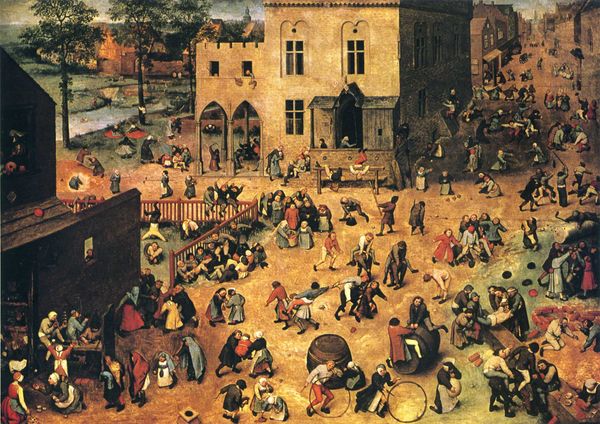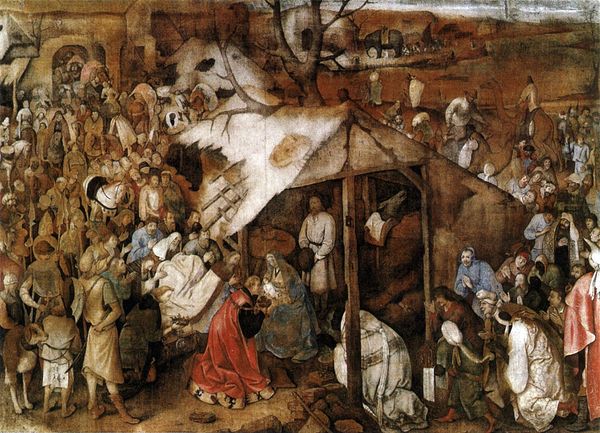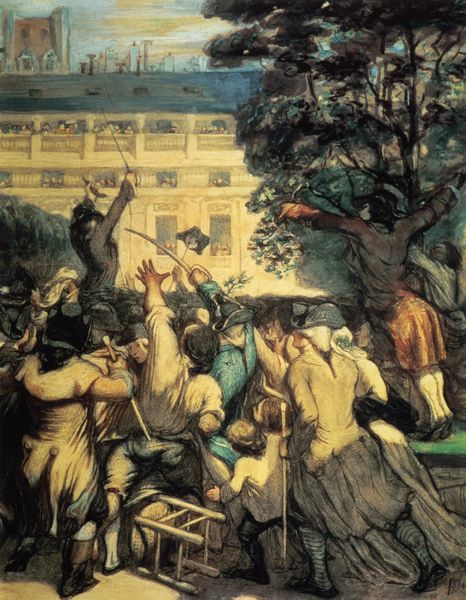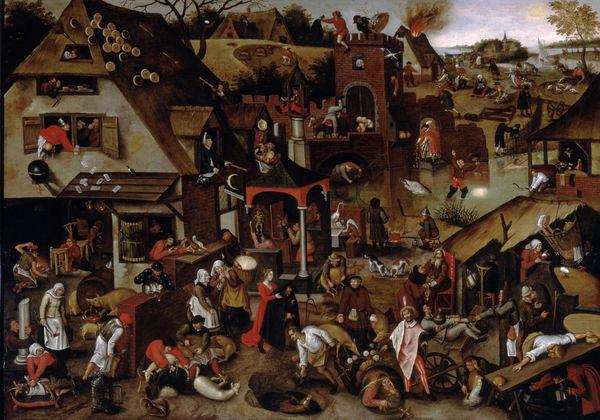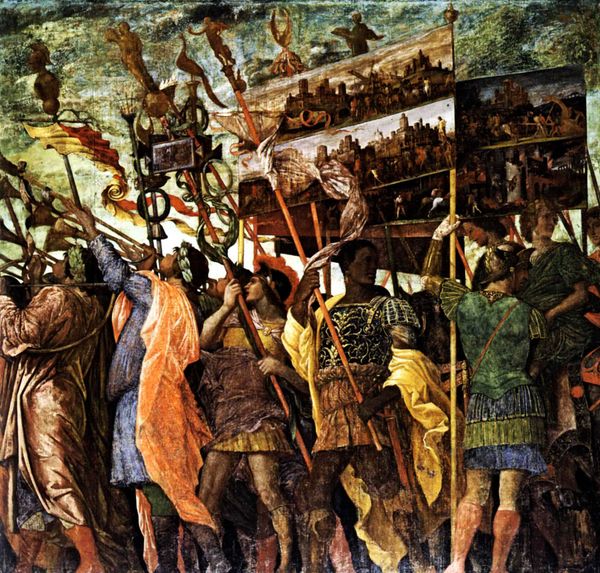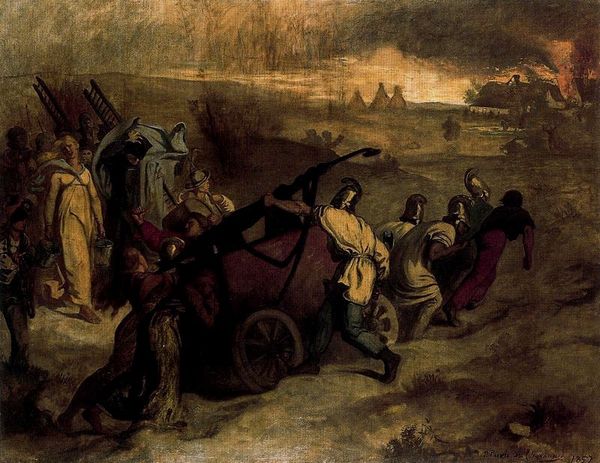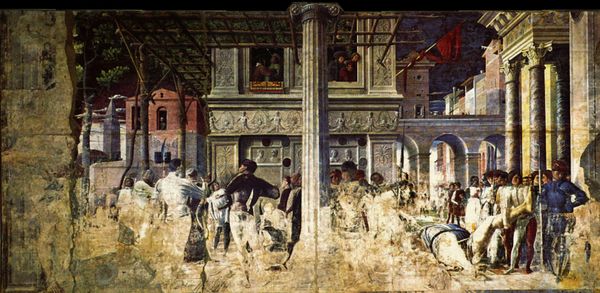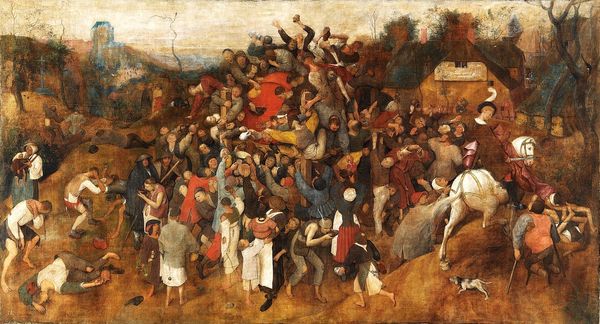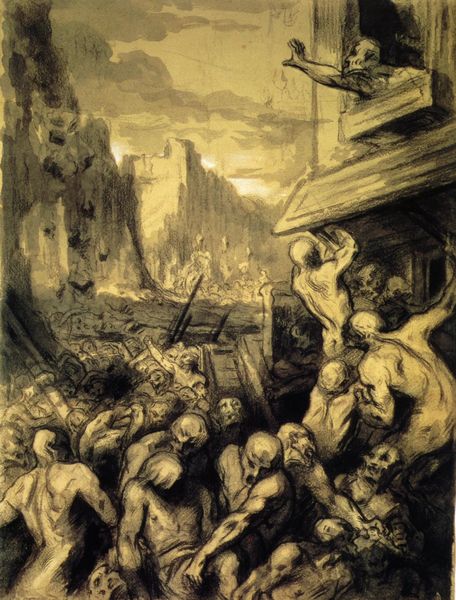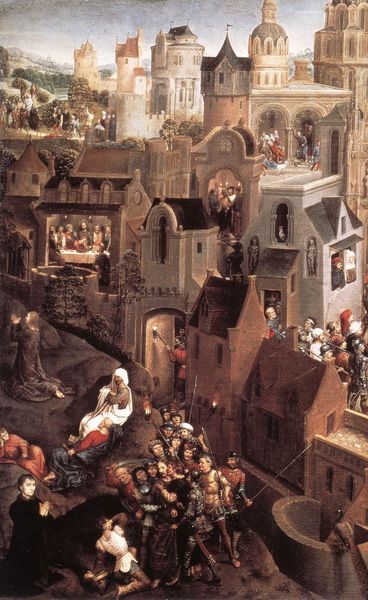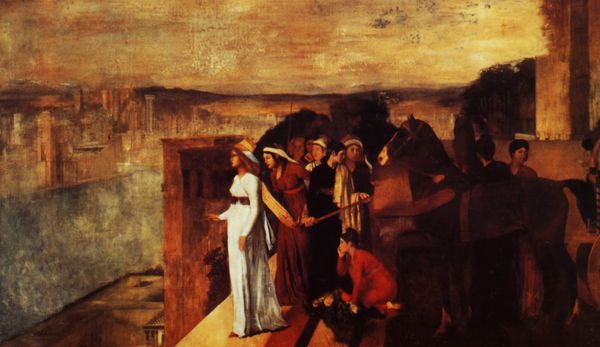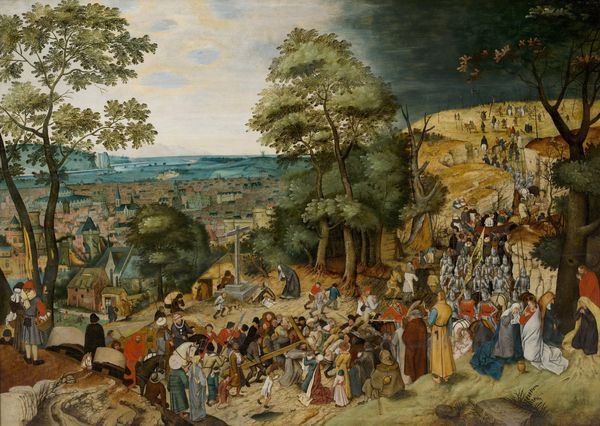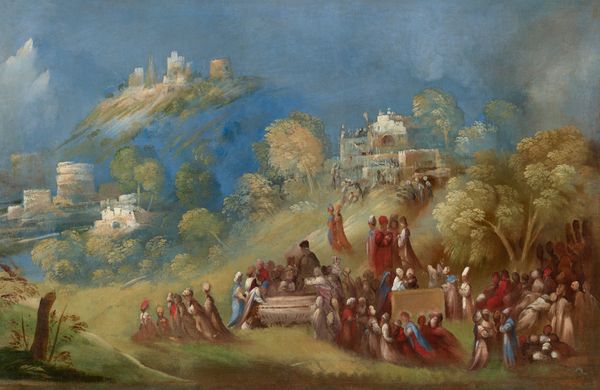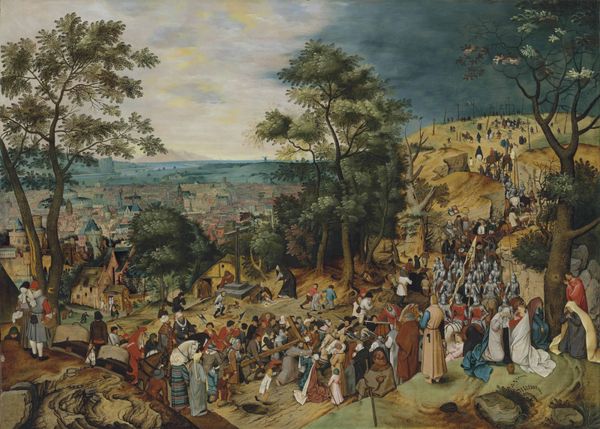
Dimensions: 68.9 x 49.8 cm
Copyright: Public domain
Editor: This is Carl Spitzweg's "Arrival in Seeshaupt," painted around 1880 using oil on canvas. It depicts a bustling scene in a small town. What strikes me most is the sense of joyful chaos—everyone seems to be going somewhere! What do you see in this piece? Curator: Beyond the immediate charm, I see a visual record of a culture grappling with modernity. Consider the railway, only partially visible. The "arrival" signifies not just people, but also new ideas, technologies, and social norms entering a previously insulated world. Editor: That's a fascinating point. The train is almost secondary, yet its presence is powerful. The figures, with their varying attire and activities, feel very much a part of the Romanticism movement. Curator: Precisely! The individual, often yearning for a simpler past, stands in contrast to the incoming locomotive. What emotional narrative do you read from the colors used? Editor: There is something subtly melancholic amidst the bright colors. Almost a tension between celebration and uncertainty. It almost asks, "At what cost?" Curator: You're touching on something key here. Spitzweg, through his intimate scenes, explored how technology was affecting human relationships, a sentiment reflected by many artists during the time. How interesting. Editor: I'm left wondering, if Spitzweg was alive today, what symbols of progress would he feature in his art to trigger that same blend of emotions? Thank you. Curator: And thank you for the reminder that art history lives as long as the symbolic narratives remain alive, changing over time.
Comments
No comments
Be the first to comment and join the conversation on the ultimate creative platform.
